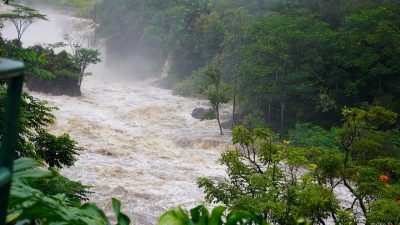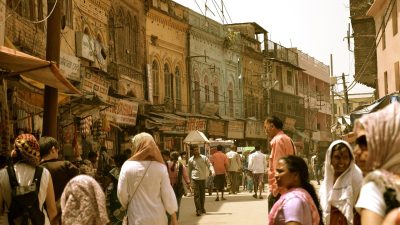A Tragedy Of Nature Or A Wake-Up Call For Disaster Management?
The 1991 Bangladesh Cyclone: Was It a Natural Disaster or a Failure of Preparedness?
The cyclone that struck Bangladesh in 1991 was one of the deadliest storms in history, leaving behind unimaginable devastation. While it is often categorised as a natural disaster, many argue that the severity of its impact was made worse by inadequate disaster management. Though nature’s fury cannot be controlled, the extent of destruction calls into question whether more could have been done to reduce the loss of life.
Multiple factors contributed to the severity of the storm, including a lack of early warning systems, ineffective communication, and insufficient preparedness. The 1991 disaster serves as a grim reminder of how critical it is to improve disaster management strategies to reduce the human cost of such events.
The Aftermath of the 1991 Cyclone: How Bangladesh Was Forever Altered
The effects of the 1991 cyclone on Bangladesh were devastating. Over 138,000 lives were lost, with millions more affected. Entire communities were wiped off the map, and the country’s infrastructure suffered severe damage. This catastrophic event not only caused widespread destruction but also reshaped the nation’s future. Economically, the cyclone set Bangladesh back several years, as vast areas of farmland were flooded, disrupting agriculture and the livelihood of countless farmers.
This tragedy led to significant changes in the country’s approach to disaster management. The government, along with international aid organisations, recognised the need for substantial reforms in disaster preparedness and response. The legacy of this disaster continues to inform the policies and strategies implemented today.
The Toll of the 1991 Bangladesh Cyclone: Lives Lost and Destruction Wrought
- Over 138,000 people perished: The cyclone claimed a staggering number of lives, with many victims succumbing to the storm surge that inundated coastal regions.
- Millions impacted: The cyclone affected more than 10 million people, forcing them from their homes and leaving them with nothing as floods ravaged their land and possessions.
- Massive destruction: With more than 400,000 homes destroyed and extensive damage to vital infrastructure, the scale of the damage was unprecedented.
The Warning System Failure: Could Lives Have Been Saved in the 1991 Cyclone?
The cyclone highlighted significant shortcomings in Bangladesh’s disaster response system. Despite having access to advanced meteorological tools, warnings about the storm were either delayed or insufficiently communicated to the people. As a result, many lives were lost due to the lack of time for evacuation or preparation. The storm hit rapidly, and without clear guidance from authorities, many were left in the dark about the impending disaster.
Had there been a more robust and timely warning system in place, it’s likely that the impact of the cyclone would have been far less severe. Unfortunately, the country’s lack of preparation and inability to communicate effectively during the storm meant that thousands suffered unnecessarily.
Political Consequences: The Government’s Response to the 1991 Cyclone
Following the cyclone, the Bangladeshi government came under intense scrutiny for its handling of the disaster. Criticism centred on the government’s delayed response and lack of preparedness, both of which contributed to the loss of life. The absence of a clear evacuation plan and failure to effectively communicate the cyclone’s severity led to widespread anger and frustration among the public.
While the government faced significant backlash, the cyclone also brought attention to the need for comprehensive disaster management reforms. The political fallout led to urgent discussions about how to improve future responses to similar events, both in terms of government accountability and coordination with international aid agencies.
Lessons Learned from the 1991 Cyclone: Bangladesh’s Shift in Disaster Preparedness
In the aftermath of the cyclone, Bangladesh took critical steps to overhaul its disaster preparedness systems. The country’s focus shifted towards improving early warning systems, building more resilient shelters, and better educating the public on how to respond during an emergency. These changes were instrumental in reducing the impact of future storms and improving the country’s overall disaster response.
Since the 1991 cyclone, Bangladesh has become a model for disaster management in the developing world. The government and international agencies worked together to create stronger, more effective systems, ensuring that the country is better equipped to deal with natural disasters in the future.
Survivors of the 1991 Cyclone: Their Struggle for Recovery and Forgotten Voices
For the survivors of the 1991 cyclone, life after the storm was an ongoing battle. Families lost loved ones, homes were destroyed, and communities had to rebuild from the ground up. While aid was provided, the recovery process was slow and many survivors faced a long struggle to regain their livelihoods. Despite their resilience, these survivors have often been overlooked in the years since, as international attention moved on to other global crises.
The plight of these survivors illustrates the long-term challenges faced by communities after such disasters. Although immediate relief was provided, the survivors continued to suffer without adequate support in the years that followed. The ongoing struggle to rebuild their lives emphasises the importance of sustained recovery efforts and the need for long-term aid in the wake of such devastation.
The Need for Continuous Improvement: What the 1991 Cyclone Taught the World
The 1991 Bangladesh Cyclone served as a valuable lesson in disaster preparedness and response, not only for Bangladesh but for the international community. The cyclone highlighted the shortcomings of many nations in their ability to respond to natural disasters effectively. While Bangladesh has made significant improvements in its disaster management systems, many countries—especially in the Global South—still face challenges in building resilience against such events.
The 1991 cyclone’s aftermath showed that investing in infrastructure, technology, and public education on disaster risks is crucial to minimise the effects of future disasters. Countries at high risk of natural disasters must prioritise these measures to avoid repeating the mistakes made during this catastrophic event.
The 1991 Bangladesh Cyclone: A Tragedy We Must Always Remember
The 1991 Bangladesh Cyclone should be remembered not just for the immense loss of life but also for the critical lessons it taught about the importance of disaster preparedness. Although Bangladesh has made considerable strides in improving its disaster management systems since then, the human cost of the cyclone remains a somber reminder of the need for continuous improvement. This disaster should serve as a warning to ensure future generations are better prepared for the challenges posed by natural catastrophes.
Looking back at this tragic event, it’s crucial to ensure that the lessons learned are not forgotten. The international community must continue to support the development of disaster management infrastructure, particularly in vulnerable regions, to prevent such a catastrophe from happening again.
FAQs
1. What was the death toll from the 1991 Bangladesh Cyclone?
The cyclone claimed over 138,000 lives and impacted millions across Bangladesh, leaving widespread devastation.
2. Could the cyclone have been prevented?
While natural events like cyclones can’t be stopped, better preparedness and faster warning systems could have saved many lives.
3. How did the cyclone affect Bangladesh’s economy?
The cyclone caused significant damage to infrastructure, agriculture, and homes, which led to long-term economic setbacks.
4. What steps have been taken since to improve disaster management?
Bangladesh has improved its early warning systems, built better shelters, and introduced more comprehensive disaster response plans since the cyclone.
5. How did international organisations assist after the cyclone?
International aid provided relief efforts, but their response was initially slow and disorganised, which led to further delays in helping those most in need.
References:
“Bangladesh cyclone of 1991
“Bangladesh cyclone of 1991”
Cyclones in Bangladesh: A History of Mismanagement”
“The Bangladesh Cyclone of 1991: Why So Many People Died”




